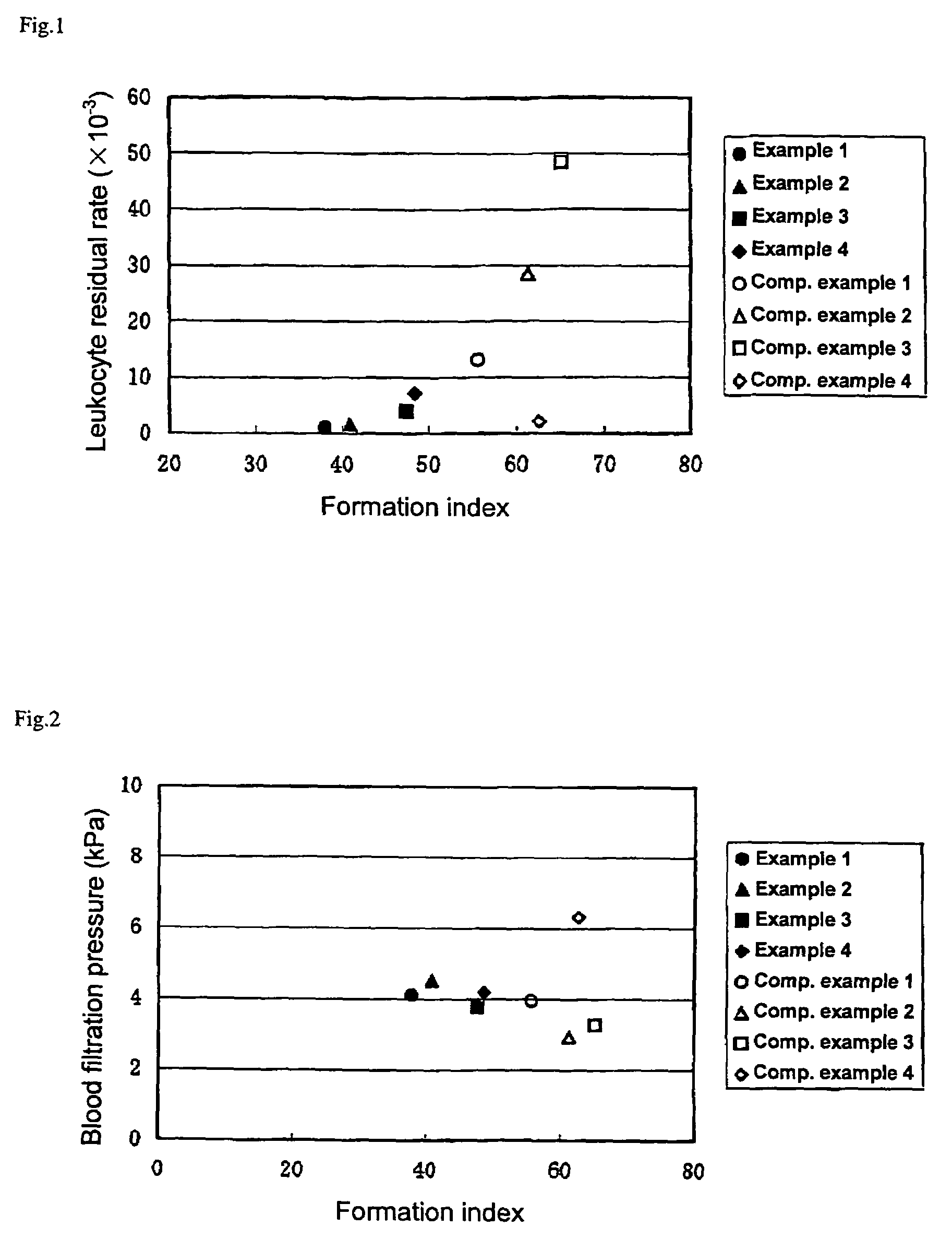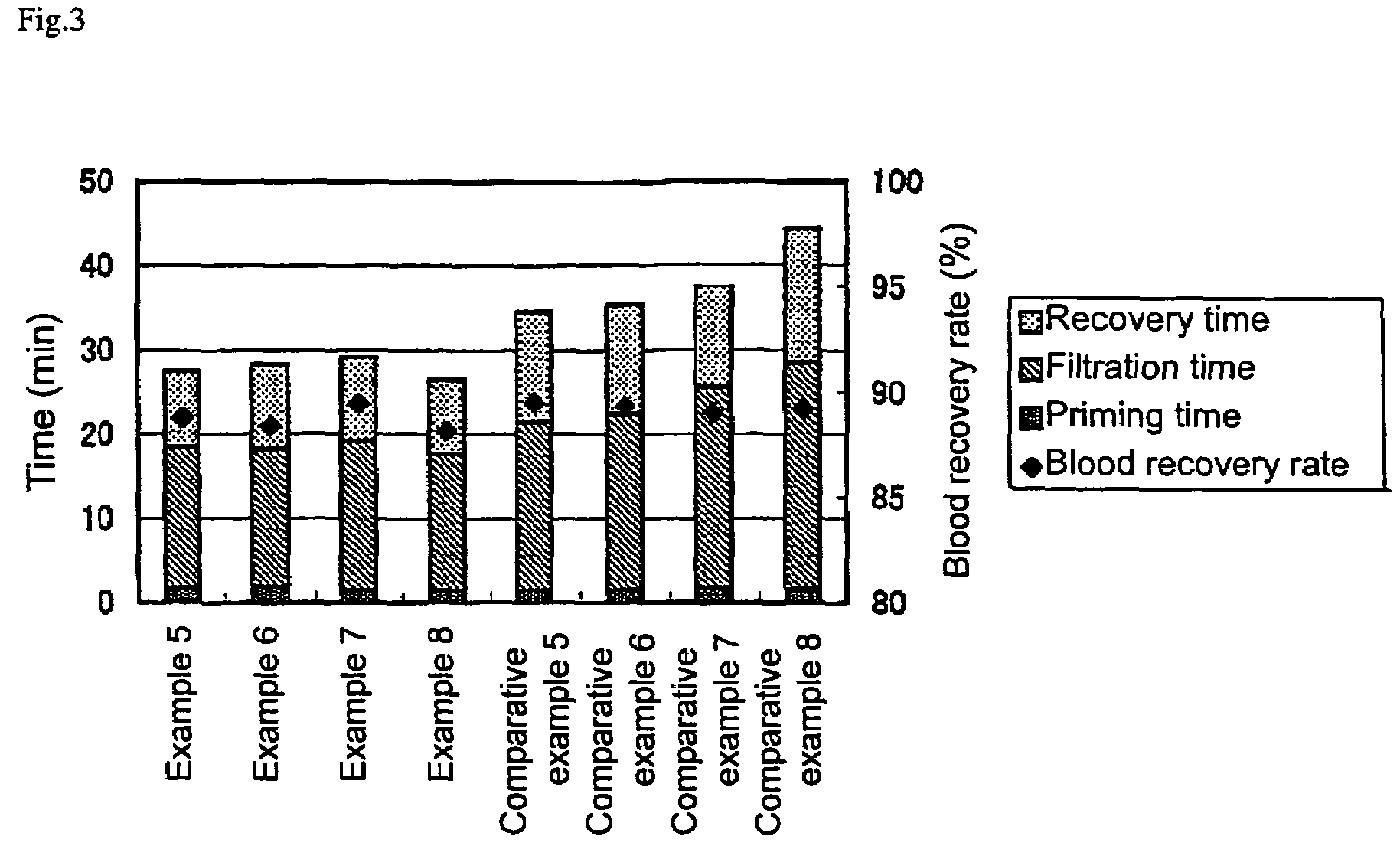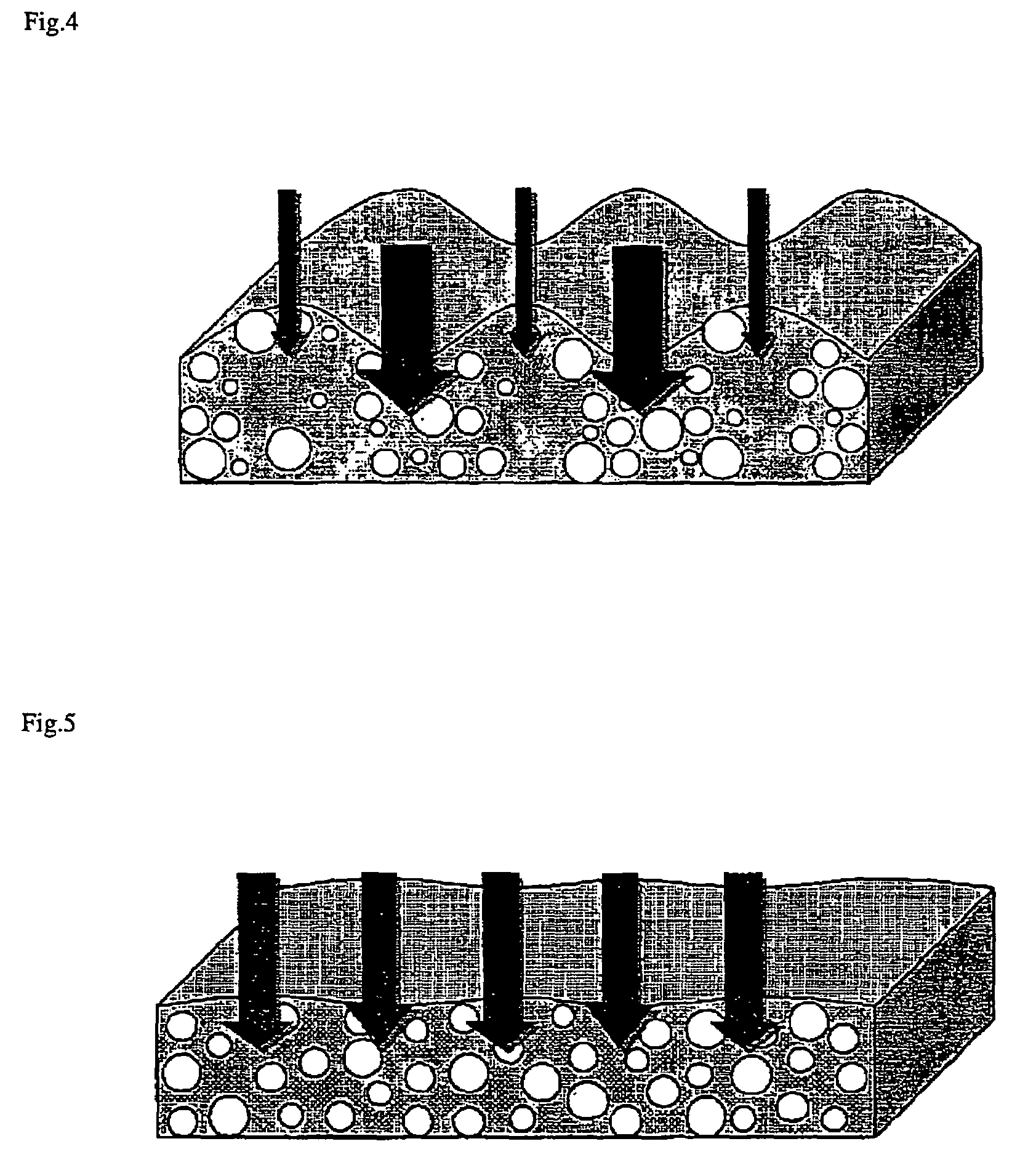Method for removing leukocytes, leukocyte-removing filter and utilization thereof
a technology of leukocyte removal and filter, applied in the direction of filtration separation, melting method, separation process, etc., can solve the problems of blood filtration speed significantly decreased before, large degree of pressure drop, etc., to achieve the effect of reducing filtration time and high leukocyte removal performan
- Summary
- Abstract
- Description
- Claims
- Application Information
AI Technical Summary
Benefits of technology
Problems solved by technology
Method used
Image
Examples
example 1
[0117]Nonwoven fabric formed of polyethylene terephthalate (hereinafter abbreviated as “PET”) and having a weight per square meter of 40 g / m2, a thickness of 0.23 mm, a filling rate of 0.14, an average fiber diameter of 1.3 μm, and a formation index of 38.0 was used as a leukocyte removal filter material. The formation index was measured according to the above-described method.
[0118]A test method for evaluating the leukocyte removal performance is described below. Blood used for blood evaluation was whole blood prepared by adding 14 mL of a CPD solution as an anticoagulant to 100 mL of blood immediately after collection, stirring the resulting mixture, and allowing the mixture to stand for two hours (hereinafter called “pre-filtration blood”). A column with an effective filtration area of 1.3 cm2 was packed with eight sheets of nonwoven fabric. A syringe filled with the pre-filtration blood was connected with the inlet of the column through a polyvinyl chloride tube having an inner ...
example 2
[0121]Nonwoven fabric formed of PET and having a weight per square meter of 40 g / m2, a thickness of 0.23 mm, a filling rate of 0.14, an average fiber diameter of 1.3 μm, and a formation index of 40.9 was used as a leukocyte removal filter material. The blood test was conducted in the same manner as in Example 1. As a result, the leukocyte residual rate was 1.6×10−3, and the blood filtration pressure was 4.5 kPa.
[0122]If the leukocyte residual rate becomes 10−4 or less, the number of residual leukocytes approximately reaches the measurement limit Therefore, in the above examples, the filter was prepared and tested under such conditions that the leukocyte residual rate became 10−4 or more. A filter ensuring a leukocyte residual rate of 10−4 to 10−6 necessary for preventing serious side effects can be obtained by designing a filter suitable for the amount of blood product subjected to the leukocyte removal filtration.
example 3
[0123]Nonwoven fabric formed of PET and having a weight per square meter of 40 g / m2, a thickness of 0.23 mm, a filling rate of 0.14, an average fiber diameter of 1.3 μm, and a formation index of 47.5 was used as a leukocyte removal filter material. The blood test was conducted in the same manner as in Example 1. As a result, the leukocyte residual rate was 4.0×10−3, and the blood filtration pressure was 3.8 kPa.
PUM
| Property | Measurement | Unit |
|---|---|---|
| thickness | aaaaa | aaaaa |
| diameter | aaaaa | aaaaa |
| size | aaaaa | aaaaa |
Abstract
Description
Claims
Application Information
 Login to View More
Login to View More - R&D
- Intellectual Property
- Life Sciences
- Materials
- Tech Scout
- Unparalleled Data Quality
- Higher Quality Content
- 60% Fewer Hallucinations
Browse by: Latest US Patents, China's latest patents, Technical Efficacy Thesaurus, Application Domain, Technology Topic, Popular Technical Reports.
© 2025 PatSnap. All rights reserved.Legal|Privacy policy|Modern Slavery Act Transparency Statement|Sitemap|About US| Contact US: help@patsnap.com



